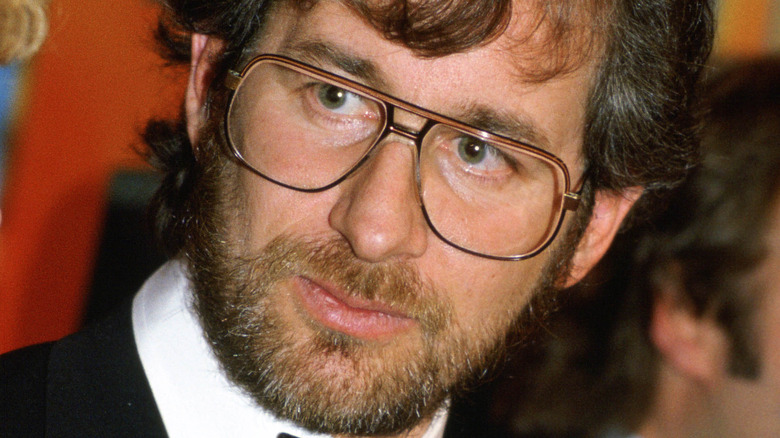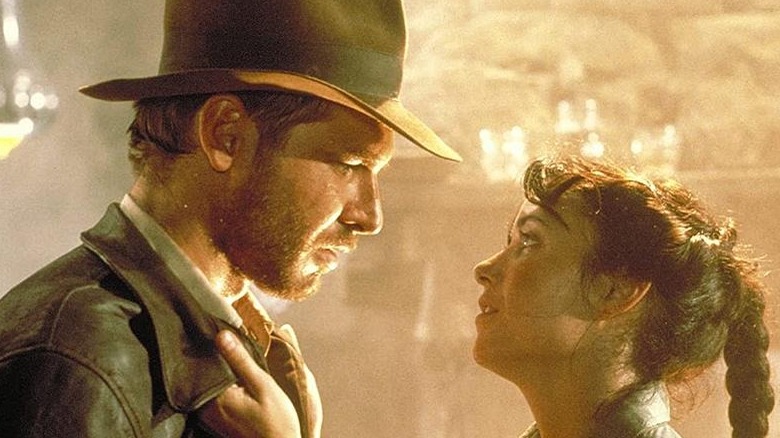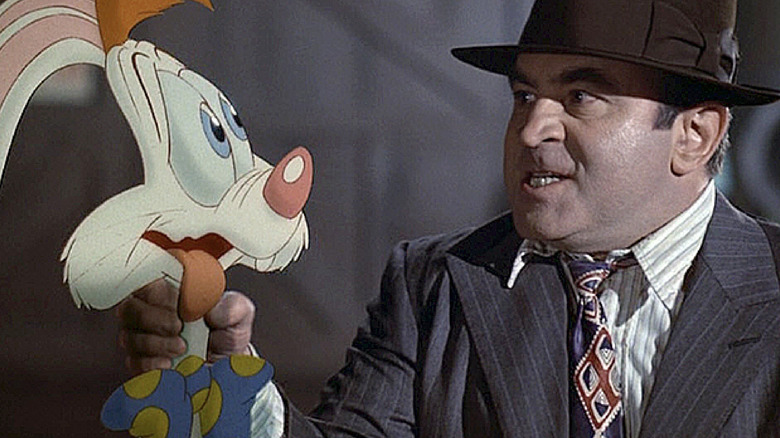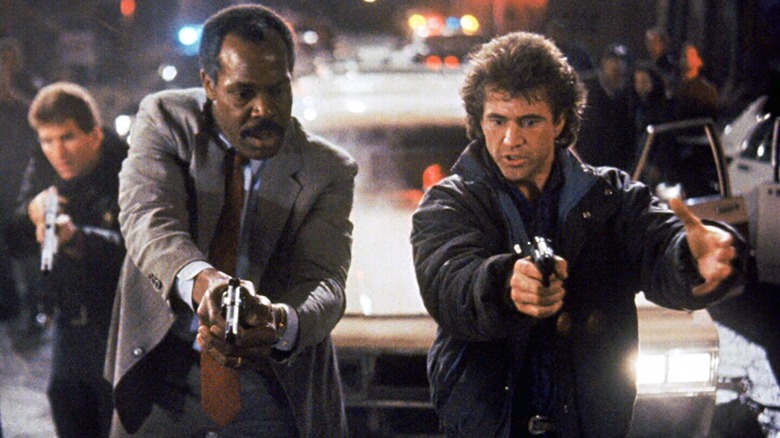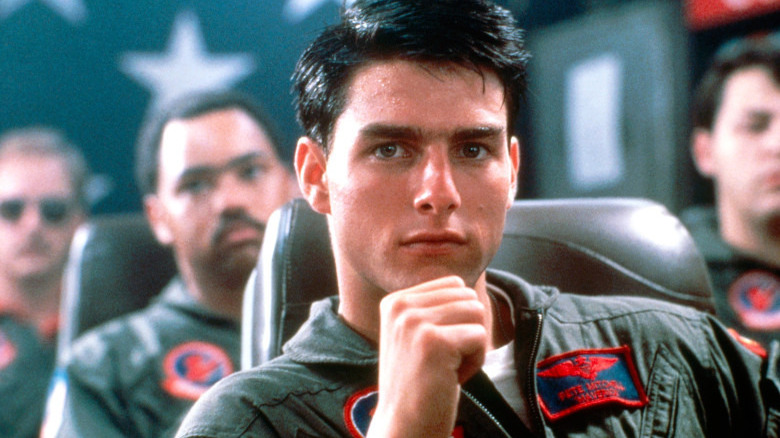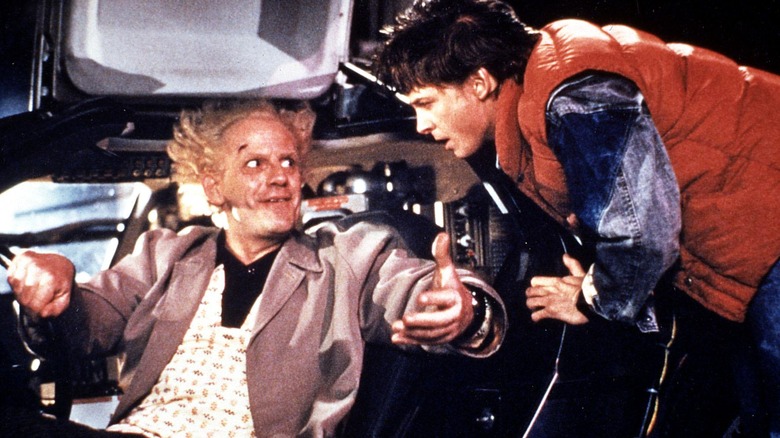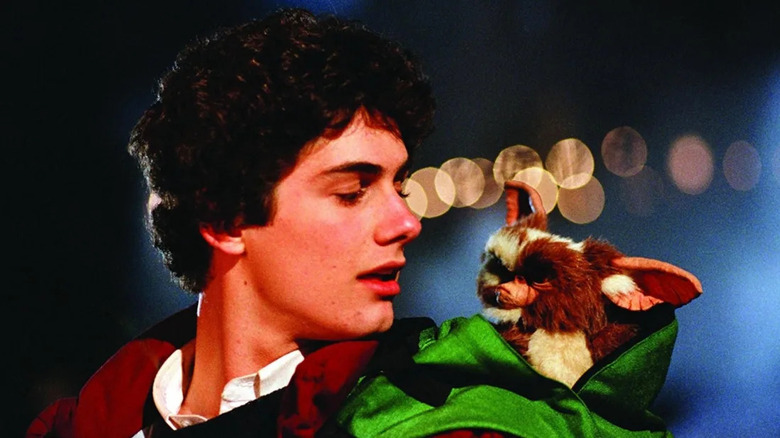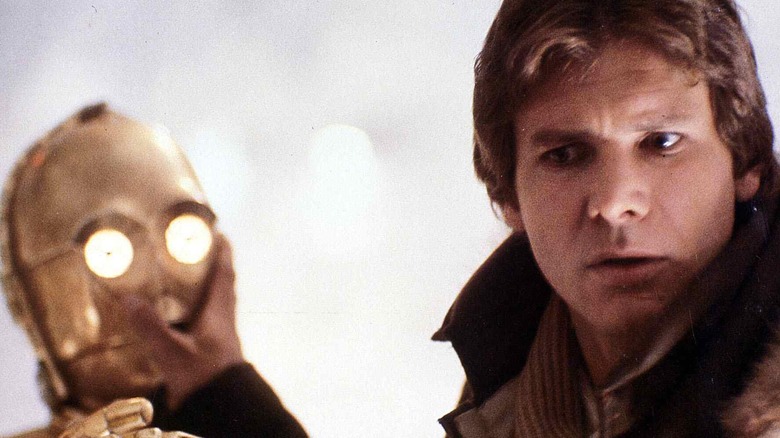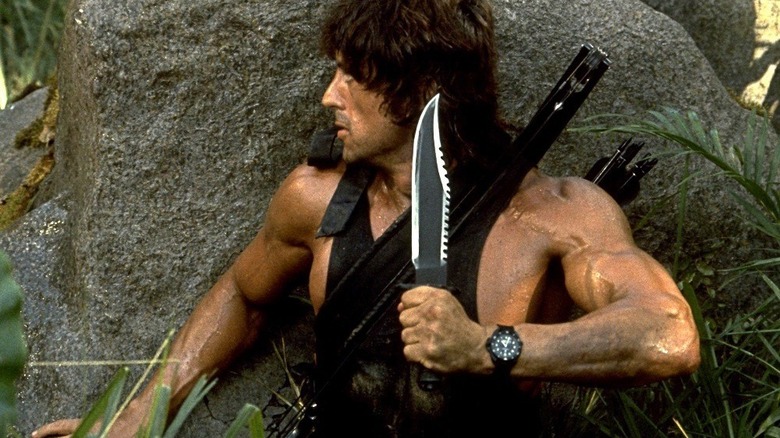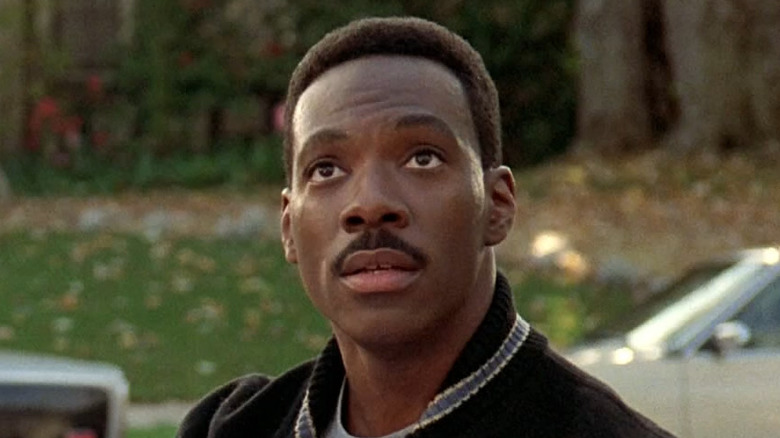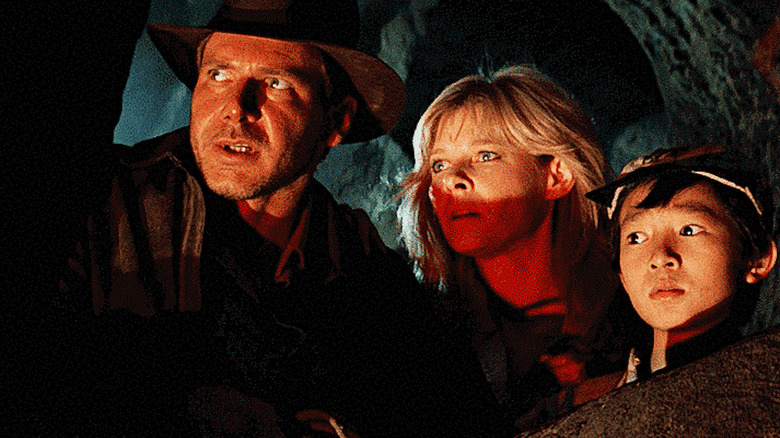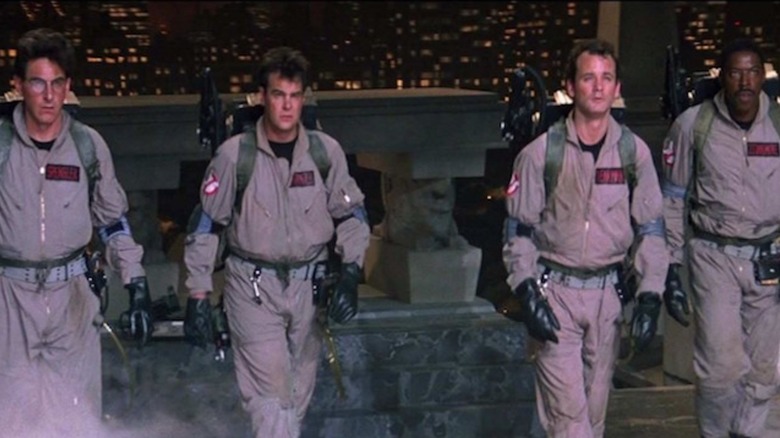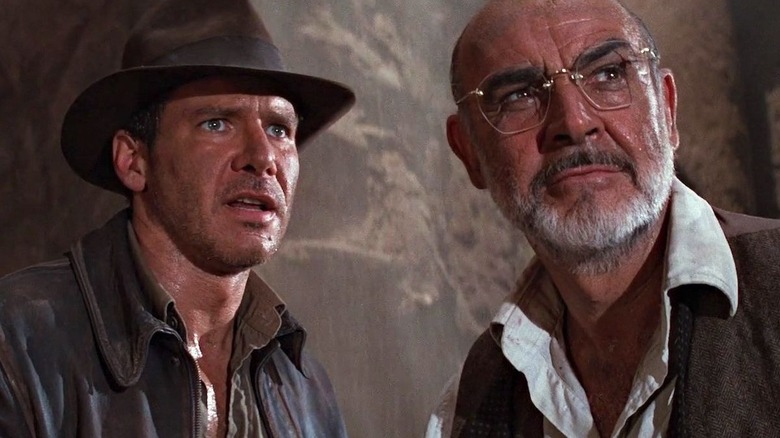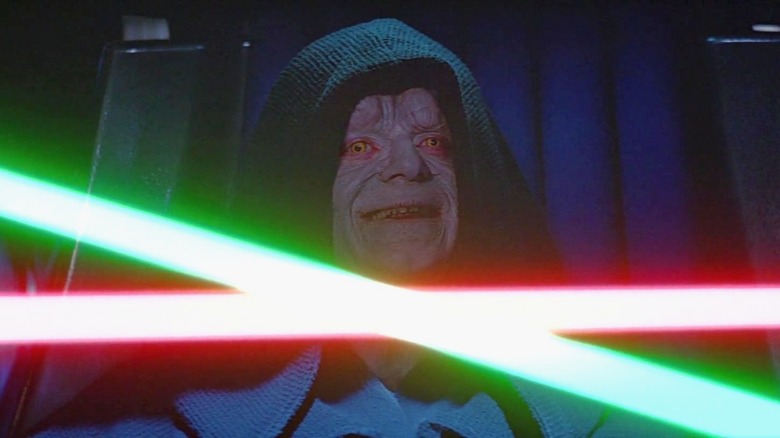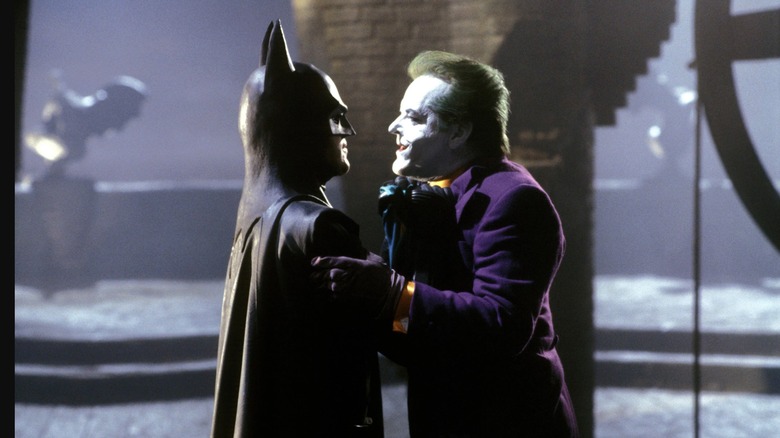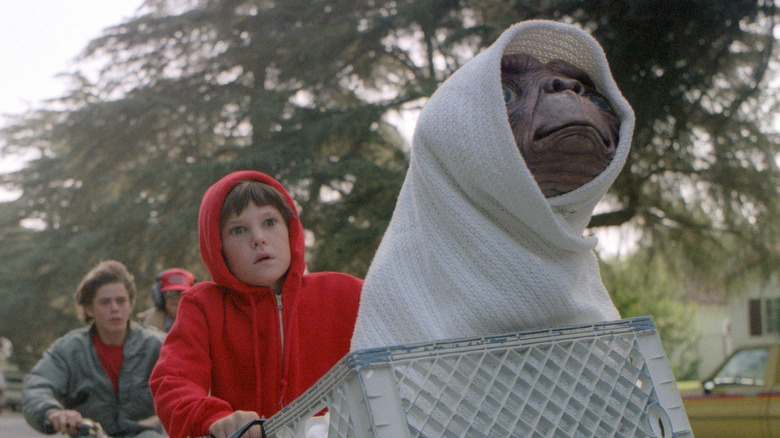The Biggest Summer Films Of The 1980s
After "Jaws" was released in June of 1975, summers at the movies would never be the same. Steven Spielberg's shark infested horror-funfest was a hit with audiences and their wallets, and gave birth to the "summer blockbuster." From the first Friday in May through Labor Day weekend, studios have been pushing out tentpole films ever since — hoping to bring in big box office receipts, and then outdo them the next year.
The 1980s were perhaps the most unforgettable decade of such "summer blockbusters." Many of the films that lined the top of the charts were instant-classics when they were released, and remain worthy of that designation to this day.
With that in mind, let's examine 15 of the biggest summer films of the 1980s — nine of which employed the talents of George Lucas' Industrial Light & Magic (ILM), seven involved Spielberg (including four he directed), and 5 were released by Paramount Pictures.
[Note: Box office totals listed below are receipts only from the summer. Totals do not include receipts beyond then, nor include re-releases. The totals have not been adjusted for inflation.]
15. Raiders of the Lost Ark (1981) - $125,254,773
”Just when you thought it was unsafe to go back in the theaters, movie audiences proved they still exist in great numbers,” said marketing expert Charlie Powell to The New York Times, on how the successful summer of 1981 broke Hollywood's two and a half year box office slump.
Leading that charge was the world's introduction to everyone's favorite archeologist with a fedora, Indiana (named after George Lucas' dog) Jones in "Raiders of the Lost Ark." While the bulk of its take came in that summer, it continued to play in theaters well into the following year, and still holds the record as the slowest film to reach the $200 million mark, taking 282 days to get there, when it did so on March 20, 1982.
The film was a financial success, and a critical one too, receiving 8 nominations at the 54th Academy Awards (including Best Picture) and winning five Oscars. It spawned three sequels (with a fourth in the works), a "spectacular" stunt show at Disney's Hollywood Studios, and even had a couple of kids impossibly make a shot-for-shot remake of it. It has influenced filmmakers and filmmaking ever since, and its greatness is still being celebrated 40 years later, forever inspiring a sense of wonder.
14. Who Framed Roger Rabbit (1988) - $131,273,528
There had been live-action movies where humans and animated cartoon characters shared the screen together with them before, from 1944's "The Three Caballeros" to 1945's "Anchors Aweigh" to 1964's "Mary Poppins" to 1977's "Pete's Dragon," but nothing was quite like the 1988 summer blockbuster "Who Framed Roger Rabbit."
The animators wanted to break all the rules that had limited those previous films, as cinematographer Dean Cundey recalled. "We looked for every opportunity to do the things that hadn't been done before," he said. "Like the camera moving with the characters and doing a lot of panning and tilting, the stuff that made live action movies seem natural."
Director Robert Zemeckis was proud of the film, especially for changing the modern perception that cartoons were only for kids. "'Roger Rabbit' is the perfect place to celebrate animation humor," he said. "You can't get it anywhere else." Telling the animators the film should have the "Disney technique, Warner Brothers' characterizations and Tex Avery humor," it not only had that but also a lot of different studios' cartoon characters together, which Executive Producer Steven Spielberg greatly helped make happen (although the owners of Popeye and Felix the Cat passed on Disney's offer of $5,000 per character).
Roger Rabbit was seen as the next great Disney character, and was utilized the following year to help prop up "Honey, I Shrunk the Kids." Disney made an animated short, their first in almost 25 years, starring Roger titled "Tummy Trouble," which preceded the "Shrunk" feature and helped to make it the 16th biggest summer movie of the 1980s. But a full sequel has never happened.
13. Lethal Weapon 2 (1989) - $132,178,254
Much like "Rambo: First Blood Part II," the second helping of the Martin Riggs/Roger Murtaugh (Mel Gibson/Danny Glover) buddy cop Richard Donner dramedy "Lethal Weapon" was a "breakout sequel," which far outpaced the original film in box office gross. The first "Weapon" made only $65 million in total, and "Lethal Weapon II" made almost a third of that in its first opening weekend of release, where it also battled "Weekend at Bernie's."
Screenwriter Jeffery Boam had quite a summer in 1989, co-writing the screenplays to two films that were the top three grossers of the season: "Lethal Weapon 2" and "Indiana Jones and the Last Crusade." Both films introduced new characters to pair with our beloved heroes, and in the case of "Weapon," resurrected Joe Pesci's career. Boam didn't seem to care that critics saw "Weapon" as "brainless," telling the New York Times, "'I want emotional reaction, not intellectual engagement. An audience wants to be wound up because it enjoys the pop at the end when it's liberated.”
12. Top Gun (1986) - $132,351,093
A magazine article on the high flyers of San Diego's Miramar Naval Air Station inspired super producers Don Simpson and Jerry Bruckheimer to make "Top Gun." Supposedly Matthew Modine turned down the lead role of Maverick, but even before the script was written, they saw these "rock & rollers in the sky" as a bunch of "Tom Cruises."
Cruise was dismayed working on the mythical Ridley Scott film "Legend." "I don't want to make another movie like that again. There are so many things that were out of my control," he said of the production. Before he signed on to "Top Gun," he wanted to work on the script to make sure he'd be happy with the product. That finished product was directed by Ridley's younger brother Tony Scott, which Cruise commented as "Definitely a weird coincidence. I feel like a member of the family."
When finally released in 1986, "Legend" played in theaters for only four short weeks and left the week before "Top Gun" arrived on May 16. It had an easy victory that opening weekend over "Sweet Liberty," and eventually became the biggest hit that summer and the year itself. "Top Gun" cemented Cruise as a bona fide draw, as its domestic total of $176,781,728 came close to topping all other movies he had starred in up until that point, combined.
The soundtrack was a hit on its own — spending five different weeks at number one on the charts, it became the best-selling soundtrack of the year and one of the best-selling of all time. Berlin's "Take My Breath Away" was a number one hit single and went on to win the Academy Award for Best Original Song in 1987.
11. Back to the Future (1985) - $134,178,003
Screenwriter Bob Gale was thumbing through his high school yearbook when he started thinking to himself, "'Gee, what was my dad like in high school? Would I have been friends with him?' Who hasn't wondered what their parents were like in high school? No one had ever made a movie like that before."
So began the kernel of an idea that would eventually become "Back to the Future." Problem was, Gale added, "We couldn't get the thing made to save our lives. Nobody wanted to touch it." The gross nature of our time traveling protagonist possibly hooking up with his teenage mother in the past threw many studios off.
Universal took the chance and pushed Eric Stoltz as Marty McFly on director Robert Zemeckis and his production team. When he didn't work out, they scrapped $4 million worth of footage and snapped up Michael J. Fox to replace him, who had to pull double duty, as he was also working on "Family Ties" at the same time.
Originally, "Back to the Future" was to open in August of 1985, but after overly successful test screenings reeked of a hit, they bumped up the release to the July 4th weekend, matching up against "The Emerald Forest" and "Red Sonja." It was such a large hit that it stayed in theaters for almost an entire year, becoming one of the slowest films ever to cross the $200 million mark. The total far exceeded Gale's estimates: "We were just hoping it would make more than a penny."
10. Gremlins (1984) - $137,186,485
"The Bride of Frankenstein" inspired Chris Columbus to write his own creature feature, about cute furballs who turn evil and run amok in a Norman Rockwell-esque town. Steven Spielberg snapped up the young screenwriter's script, and not wanting to repeat himself, turned the directorial reins of "Gremlins" over to Joe Dante.
"I would have loved 'Gremlins' as a boy" asserted Dante, but he "never envisioned this as a children's picture and I certainly wouldn't have made it if I had." It was actually Executive Producer Spielberg who helped to make things a bit lighter, by suggesting that the mogwai Gizmo not turn evil and remain a nice adorable gremlin.
Dante dropped many film references and homages in "Gremlins," including putting the working titles of Spielberg's movies on the town's movie marquee: "A Boy's Life" (aka "E.T.") and "Watch The Skies" (aka "Close Encounters of the Third Kind").
Opening the same weekend as "Ghostbusters," "Gremlins" settled for #2 at the box office, continued to perform well thereafter, and by the end of its theatrical run, had become one of the highest grossing films to never reach #1. Those two movies, along with "Temple of Doom," helped to make 1984 the first year to have three summer movies each top $100 million.
9. The Empire Strikes Back (1980) - $145,893,923*
George Lucas wasn't interested in directing the second installment in his "Star Wars" saga, and to ensure it didn't "turn into just another sequel," he turned to his former USC photography and film design teacher, Irvin Kershner.
"The Empire Strikes Back" premiered at the Kennedy Center as a benefit to the Special Olympics, and then four days later opened in only 126 theaters and had fans (including Jerry Orbach and his son) camped out and waiting in long lines to see it. There were 24 hour continuous showings, with eager audiences happy to pay $2.69 on average for a movie ticket. The other new offerings that weekend were "The Gong Show Movie" and (in 10 theaters) "The Shining."
In order to keep one of the greatest twists in modern movie history on the down-low, fake script pages were used while shooting "Empire," and James Earl Jones' infamous lines were dubbed in later. When people finally learned who Luke's father was, screenplay writer Lawrence Kasdan said, "It blew people's minds. I have never gone to a screening of the movie where people weren't shocked, where they didn't gasp. I would say that was the most successful secret ever kept in movies. People were amazing about not telling other people."
[*Summer Total is actually higher, but box office receipts for "Empire" only were available up till August 15, 1980]
8. Rambo: First Blood Part II (1985) - $146,011,738
Memorial Day weekend 1985 pitted "Rambo" versus James Bond at the box office. As it turned out, Roger Moore's final appearance as 007 had a view to be killed by Sylvester Stallone's sequel "First Blood Part II." This follow-up was one of the very first "breakout sequels," almost tripling the domestic box office of the original "First Blood" from 1982.
Stallone believed he was doing his patriotic duty with the POW rescue film, saying Rambo was "a megaphone. He's telling you that men who fought for their country, and a lot of them lost their lives, deserve to be honored.”
Vietnam veterans did not concur, as the character was clearly getting further away from his PTSD-depicting roots and evolving into an '80s action hero audiences cheered. ″When we got to Vietnam, we found that it wasn't like the John Wayne movies," Veteran's Speakers Alliance Eduardo Cohen told the Associated Press that year. "[Stallone] was never involved in the war. He doesn't know what we went through."
Soviet Union cultural officials joined the fray, denouncing both "Part II" and Stallone's "Rocky IV" as American propaganda. Poet Yevgeny Yevtushenko likened Stallone's films to a form of pornography, calling them "war-nography."
7. Beverly Hills Cop II (1987) - $150,909,972
While "The Golden Child" made close to $80 million in 1986, it was still considered a disappointing output for an Eddie Murphy movie. Luckily his next picture would pretty much be a sure thing — a sequel to his 1984 hit "Beverly Hills Cop." New destinations were considered for locations, such as Hawaii, Paris and London, to which the latter Murphy visited and said "I don't like it here." The setting returned to Los Angeles, and that wasn't the only thing that was overly familiar.
Murphy himself admitted to "Rolling Stone" back in 1989 that it's not always about the quality. "Do you know what's scary? 'Beverly Hills Cop II' was probably the most successful mediocre picture in history," he admitted. "It made $250 million worldwide. 'Cop II' was basically a rehash of 'Cop I,' but it wasn't as spontaneous and funny. But my pictures make their money back."
"Cop II" opened on the same weekend as ”Ernest Goes to Camp" and ended up king of the 1987 box office. It also marked the first credited role for Chris Rock, who played a valet at the Playboy Mansion.
6. Indiana Jones and the Temple of Doom (1984) - $167,732,055
The sequel to "Raiders of the Lost Ark" exists on a timeline where its events actually take place before it, and is the only film in the franchise to keep the Nazis on the sideline. The enemy in "Indiana Jones and the Temple of Doom" was the Thuggee cult, who kidnapped and enslaved children, literally tearing the hearts from the chests of men. Throw in some eye-popping, vomit-enduring local delicacies like snake surprise and chilled monkey brains, and you have one of the least family friendly PG rated movies ever cast upon an American audience.
While the film did set an industry single-day record by selling $9,324,710 worth of tickets (setting the six day earning record at $42,267,345 and closing out the year as 2nd highest grossing picture), it was also making headlines for it graphic violence and dark tone.
People protested the depiction of Indians in the film, carrying placards that read "Raiders of the Third World," and director Steven Spielberg himself wasn't happy with the picture, admitting it was "much too horrific" and that he "out-poltered 'Poltergeist.'" Because he agreed with the outcry, Spielberg pushed the MPAA to create the PG-13 rating, with "Red Dawn" becoming the first film to be classified as such.
It wasn't all "doom" and gloom for the director, however, as Spielberg met his future wife on set — Kate Capshaw, who played Indy's love interest, Willie Scott. The two dated while Spielberg was legally married to Amy Irving, and then eventually wed in 1991 and had five kids together.
5. Ghostbusters (1984) - $189,115,606
Dan Aykroyd's family has a storied background in the supernatural, and he channeled his beliefs into a story about fighting ghosts, which was to be a starring vehicle for both him and John Belushi. After Belushi's untimely death, actor/writer Harold Ramis and director/producer Ivan Reitman helped to shape "Ghostbusters" away from being a futuristic space adventure into a modern day New York ghost story, and Bill Murray finished the job with his own unique tornado of personality.
With over 200 special-effects shots needed, and the big post houses tied up with "Indiana Jones and the Temple of Doom" and "Return of the Jedi," Columbia Pictures helped to bankroll Oscar-winner Richard Edlund's new effects company and get the film completed.
On June 8, 1984, "Ghostbusters" were battling spirits on screen, and battling "The Gremlins" on other screens, when they both opened on the same weekend. "Ghostbusters" held the "Gremlins" at bay, and edged our "Indiana Jones and the Temple of Doom" as the number one hit of that summer, becoming one of the biggest comedies of all time. Its theme song by Ray Parker Jr. knocked Prince's "When Doves Cry" from the top of the charts that August, it was nominated for an Academy Award, and sued by Huey Lewis for sounding too much like "I Want A New Drug."
Rick Moranis, who played Louis Tully, reflected on the film's staying power. "The film crossed over to so many markets and audiences and was celebrated for so long," he said. "It went through three seasons: the entire summer. [Then] every kid was dressed as a Ghostbuster for Halloween, and it dominated the Christmas gift season."
4. Indiana Jones and the Last Crusade (1989) - $190,057,670
The stars aligned when James Bond (Sean Connery) teamed up with Indiana Jones (Harrison Ford) for his third cinematic adventure — "The Last Crusade."
Spielberg got double meaning and pleasure out of his holy plot device and big name pairing, saying: "We came up with the father-son story because the Grail is symbolic of finding the truth in one's life — the truth we are always looking for, consciously or unconsciously. For me, that was represented by Indy and Henry meeting. In this context, the Grail made sense to me. They actually go after the Holy Grail, but their quest is also symbolic of their search for each other."
Hoping to get a jump on "a jam packed summer" filled with the latest and (maybe not so) greatest iterations of "Star Trek," "Karate Kid," "Lethal Weapon," and "Ghostbusters," "Jones" producer Frank Marshall explained why they chose a release date of May 24 in 1989. ”We want to have our foot in the marketplace, our hat in the ring early," he said. "With sequels, you can get to the point where the audience yawns: 'It's 'Rambo 5' or 'Rocky 8.' I don't want to see it."
Audiences thought Spielberg and company "chose wisely," and rewarded them by becoming the first film to sell $10 million dollars worth of tickets in a single day, banking the biggest opening weekend on record, grossing $37 million, and trouncing Clint Eastwood "Pink Cadillac" at the Memorial Day weekend box office. Later that summer, "Batman" would break "Jones'" newly-minted record.
3. Return of the Jedi (1983) - $232,894,136
The highly-anticipated third "Star Wars" film (which David Lynch passed on directing) was shrouded in secrecy and shot under the name "Blue Harvest" to help throw the ever hungry public off. Even the post-production technicians working on the film and execs at Kenner toys were kept in the dark as much as possible. The intended title was actually "Revenge of The Jedi," which prompted George Lucas to request that the second "Star Trek" movie retitle itself from "The Vengeance of Khan" to "The Wrath of Khan."
Promotion and marketing of "Return of the Jedi" jumped to lightspeed, with "Jedi Adventure Centers" popping up at malls and Darth Vader-shaped Pepperidge Farm cookies being popped into mouths. Six years to the day after "Star Wars" was released, "Jedi" opened in 1,002 theaters starting on May 25, 1983 to many happy fans. Within six days of release, it earned a record breaking $41,131,399, which was $16 million more than the record holder "E.T." banked in that previous summer.
Milestones were also happening on bookshelves, as titles with "Jedi" in them scored the rare feat of being a #1 fiction best seller and #1 mass market paperback in the same week. Everyone was looking to profit, as even an armed man held a projectionist hostage for two hours in order to steal a print of the movie.
2. Batman (1989) - $239,202,201
It's hard to imagine a time now when a superhero movie was a risky venture for a summer movie, or that there hadn't been a straight-faced "Batman" motion picture that existed prior to 1989.
Warner Bros bet big on Tim Burton's vision of the caped crusader, enlisted Prince for the soundtrack, ran an MTV contest to "Steal the Batmobile," and even spent $400,000 on a 90 second trailer that had fans paying to see it play before a movie, then walking out of the theater before that feature even began. A worried Burton said, "My major concern is that there is so much awareness and hype. I keep thinking, 'I hope there's a movie attached to all of this."
Advance ticket sales were high, and the film was one of the first to have opening night midnight screenings. Its competition was "Honey, I Shrunk The Kids" (no slouch itself as the 16th biggest summer movie of the '80s), and after ten days, "Batman" lived up to its hype, becoming the first movie to earn $100 million in that time span. It ended up becoming Warner's highest grossing film ever (until "Harry Potter" cast his spell), as well as the best performing superhero movie up until that time.
1. E.T. the Extra-Terrestrial (1982) - $240,118,856
Steven Spielberg had the biggest summer hit of 1981 with "Raiders of the Lost Ark," then did one better the next summer with "E.T. the Extra Terrestrial." His "story about a little boy and a family in the throes of divorce, and how they filled the hole in befriending a little lost alien" easily defeated "Grease 2" on its opening weekend. It took home $17,254,946 over the Fourth of July weekend, which, at the time, was the largest four-day haul in Hollywood history. "E.T." wasn't even the only summer movie he directed that year — as he had taken over duties for Tobe Hooper on "Poltergeist."
"E.T." netted nine Academy Award nominations, winning four Oscars and a special place in popular culture. The film has been paid homage to, and made fun of, in everything from "Stranger Things" and "Super 8" to "Meatballs II." Its success brought "people you've never heard of who crawl out of the woodwork like cockroaches to sue you," Spielberg said, and had fellow filmmakers threatening to do so too, like Satyajit Ray.
It made a catchphrase out of "phone home," a ride at Universal Studios, a product placement pass by M&Ms a sweet victory for Reese's Pieces, and led Atari to rush a video game into production for Christmas that sunk the company and forced them to bury hundreds of thousands of unsold cartridges in a New Mexican landfill. "E.T" even inspired Spielberg to become a father, "I wanted to have kids of my own like an ache in my stomach because I had to say goodbye to those actor kids."
